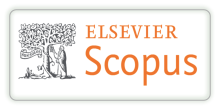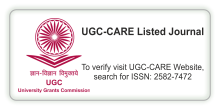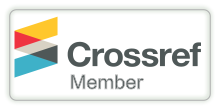MEENA KANDASAMY AS FEMALE WRITER OF DALIT LITERATURE
DOI:
https://doi.org/10.29121/shodhkosh.v5.i1.2024.4955Keywords:
Underprivileged, brilliance, oppressor, marginalize, section, downtrodden, suffering etcAbstract [English]
A country that is steeped in a wide variety of traditional institutions that present a challenge for the nation, India is a country that is rich in diversity.
Certain strict rules do not allow time to regulate itself, despite the fact that all societies that have time are open to transitions. All societies, religions, regions, and social classes are constantly striving to emerge, but they fail to recognize the same need for women and girls. That being said, undoubtedly, this class is a component of India's disenfranchised population. Indian women have always been subjected to the oppressions of society in a variety of different ways. Caste, creed, and gender have all contributed to the further division of the community. The article seeks to show the pitiful position of Dalit women in free India, with a particular focus on Meena Kandasamy's literary excellence in The Touch and Ms. Militancy. This attempt is made in light of the fact that India has recently become a free nation. In dalit society, she has done a good job of acting as a spokesperson for her sexual orientation. In her efforts to bring about positive improvements in the lives of members of society's underprivileged class, she has spared no effort in her pursuit of this goal. This so-called civilized nation is in for a rude awakening as a result of her representation of the lower strata. It is only in the "dreams of our India" that Meena is able to conjure up the possibility of a miraculous shift taking place within the nation. She talks about the predicament that the women are in and the conditions that led to the unfair treatment that they received. In an effort to improve the lives of dalit people, Meena makes use of her literary brilliance to investigate the more negative aspects of society. Attempting to gain a deeper understanding of the universal miseries experienced by the underprivileged group, this paper is an attempt to explore the writings of dalit female writers.
References
Basu, Tapan. Translating Caste. New Delhi: Delhi University, 2002. Print.
Kandasamy, Meena. Touch. Mumbai: Peacock, 2006. Print.
Kandasamy, Meena. Ms. Militancy. New Delhi. Navayana. 2010.
“Dangerous Dalit Women and Witch-Hunters”. April 14th, 2008. 28 Oct. 2011.
Interview for Orupaper.com with Dr. Krishna Kalaichelvan, n.d. 29 Oct 2014 . Ms Militancy. New Delhi: Navayana, 2010.
Guru, Gopal, “Dalit Women Talk Differently”, Economic and Political Weekly, Vol. 30, No. 41/42 (Oct. 14-21, 1995), pp. 2549, Stable URL: http://www.jstor.org/stable/4403327 Accessed: 13/09/2014 www.the-criterion.com The Criterion: An International Journal in English ISSN: 0976-8165 Vol. 5, Issue. VI December 2014
Kandasamy, Meena. "Dangerous Dalit Women and Witch-Hunters." Ultra Violet. Wordpress, 14 Apr 2008. Web. 27 Oct 2010. http://ultraviolet.in/2008/04/14/dangerous-dalit-women-and-witchhunters/ www.the-criterion.com The Criterion: An International Journal in English ISSN: 0976-8
Anand, Mulk Raj and Eleanor Zelliot. An Anthology of Dalit Literature. New Delhi: Gyan Publishing House, 1992. Print.
Dunna, Raja Rao. "Dalit Aesthetics Versus Mainstream Aesthetics: A Comparative Perspective." JETIR (2018):Volume 5, Isssue11.
Rao, Anupama. "The word and the world: Dalit aesthetics as a critique of everyday life." Journal of post colonial writing (2017): 147-161. DOI: https://doi.org/10.1080/17449855.2017.1288314
Satyanarayana, K. "The Political and Aesthetic Significance of Contemporary Dalit Literature." The Journal of Commonwealth Literature (n.d.): 1-16. Web.
Gajarwala, Jatin Toral. Untouchable Fictions: Literary Realism and the Crisis of Caste. New York: Fordham UP, 2013. Print. Ganguly, Debjani. DOI: https://doi.org/10.5422/fordham/9780823245246.001.0001
Jalote, S. R. Dalit Aesthetic Theory. The Creative Launcher: An International & Refereed e-Journal in English Vol.1, Issue-1. Web. April. 2016.
Kumar, Nigam, Yatendra. Dalit Aesthetic: An Alternative Approach. Academia. 2016.
Limbale, Sharan Kumar. Towards on Aesthetic of Dalit Literature History, Controversies, and Consideration.Translation Alok Mukherjee, New Delhi: Orient Longman, 2014. Printed.
Mishra, Jugal, Kishore. A Critical study of Dalit Literature in India. Academia. 2018. Wikipedia contributors. "Dalit literature." Wikipedia, The Free Encyclopedia. Wikipedia, The Free Encyclopedia, 8 Jul. 2018. Web. 15 Nov. 2018. Wikipedia contributors. "Indian English literature." Wikipedia, The Free Encyclopedia. Wikipedia, The Free Encyclopedia, 27 Oct. 2018. Web. 15 Nov. 2018.
Downloads
Published
How to Cite
Issue
Section
License
Copyright (c) 2024 Sanghamitra Goswami, Dr. Anushruti

This work is licensed under a Creative Commons Attribution 4.0 International License.
With the licence CC-BY, authors retain the copyright, allowing anyone to download, reuse, re-print, modify, distribute, and/or copy their contribution. The work must be properly attributed to its author.
It is not necessary to ask for further permission from the author or journal board.
This journal provides immediate open access to its content on the principle that making research freely available to the public supports a greater global exchange of knowledge.































